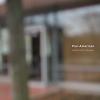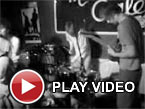Pan•American, "White Bird Release"
 Mark Nelson’s post-Labradford work has always done more for me than Labradford itself. This is not a disparaging comment on Labradford but a testament to how good Nelson has become. With each Pan•American release, Nelson has further crafted his distinctive and often copied style. These are not just interesting sounds or clever use of musical form, the music goes beyond that (and any "post-rock" clichés) to become a genuinely moving experience.
Mark Nelson’s post-Labradford work has always done more for me than Labradford itself. This is not a disparaging comment on Labradford but a testament to how good Nelson has become. With each Pan•American release, Nelson has further crafted his distinctive and often copied style. These are not just interesting sounds or clever use of musical form, the music goes beyond that (and any "post-rock" clichés) to become a genuinely moving experience.
There is a lot of space in this album, both in terms of the music being uncluttered and the imagery conjured up by the titles. The track titles make up an extract from a letter from Dr. Robert Goddard to H.G. Wells and concern the idea of space travel which brings to mind the album’s title and images of glistening white space shuttles hurtling through space. However, this is not cosmic music but music made from the ground looking up, earthly and hopeful. Other artists have explored the psychedelic aspects of space and music but Nelson has created something different, something reassuringly human. Due to this, White Bird Release is one of the strongest albums that Nelson has contributed to.
The throbbing tremolo effect on the guitar "There can be no thought of finishing" gives the music a marine-like feeling, I feel like I am bathed in warm brine and floating gently in a reverie. These sorts of feelings are precisely what I expect from Pan•American and the rest of the album is no disappointment. Every single piece is thought provoking and emotion evoking. I hate to use the old "soundtrack for a movie never made" line but the music certainly is cinematic, although it is hard to say what kind of film it would accompany.
The ebowed guitar and whispered vocals of "Both literally and figuratively" are at the same time unassuming and beautiful. The music is like a smoke that dissipates when something else distracts the listener; it is easy for White Bird Release to fade away into the background. Yet this is what makes the album so strong; it is nice audio wallpaper but when I sit down and listen properly, it is some of the best realized music I have heard. The finest moment is saved until last with "In a letter to H.G. Wells, 1932." The understated rhythm pulls us in before being obliterated by a shimmering noise that sounds like an electric organ with all of its keys pressed down at once. It is simple and it is wonderful.
And simple and wonderful is the best way to sum up White Bird Release. It feels so completely relaxed and comfortable, as if the music just fell out of a dream.
samples:



